Pikmin has been one of my favorite video game series since I first played the games around 20 years ago. They hold a special place in my heart. So, to celebrate the long awaited release of the fourth game in the series: Pikmin 4, I thought it would be fun to go back and analyze the first three games. After all, Pikmin 4 will be releasing around 10 years after Pikmin 3, which released around 9 years after Pikmin 2. It is rare for us Pikmin fans to get a sequel, so I'd like to make it as special as possible. I went ahead and replayed the first 3 games, and have just finished Pikmin 4. So what better time to look back and reflect then now, here is Part 1 of my retrospective of the Pikmin series.
When I think of the first Pikmin, I recall the vivid memory of encountering it for the first time. I was going to a friend's house. I was going to hang out with a bunch of friends from school and play video games. The Gamecube had recently released, and the newest Mario Kart (Double Dash) had either just released, or was about to. I enjoyed playing Super Mario Sunshine on my Gamecube, but my favorite game on the system was Super Smash Bros Melee. We were going to play it for hours, and it looked to be a fun time with friends.
I arrived early for the hangout, so while my friend acquainted me with his house, I ran into another friend of his, one I wasn't familiar with. He was playing some Gamecube game, and the moment I saw it, I was mesmerized. He was playing what looked like some weird alien game. There were strange creatures, some black creature with red spots all over it, and this strange blue and purple thing with spikes on it that would fly around my friend. He had an army of weird plant people. It was unnerving, unlike anything I'd seen, and it captivated me. I never played this game, all I did was watch my friend's friend play it, and not for long. However, the memory stuck with me. The fact that I can still recall it shows how much of an impression it left, this strange alien game.
That's the best way to describe the first Pikmin game and series as a whole. They are weird strange games, unique in many ways. The lead up to Pikmin 4 has really laid this out for me, as I introduce many newcomers to the series and am surprised at how many are just as perplexed and unnerved by the look of the game, just as I was many years ago.
This unnerving feeling isn't a mistake, but intentional. The developers have stated that the initial concept for Pikmin was inspired partly by Tim Burton. They wanted to create something darker and weirder than say, your typical Mario or Pokemon game. (Source: https://www.nintendo.com/en-ca/whatsnew/ask-the-developer-vol-10-pikmin-4-part-1/) In this regard, the series shares much in common with Metroid.
This similarity with Metroid can also be seen through the story. In Pikmin 1, the protagonist Olimar, a space transporter, crashes on an unknown planet. His space ship breaks, with 30 of its components falling throughout the planet. Olimar's oxygen gives him only 30 days to explore this world, retrieve all of his ship parts, and make it back home. It is dark, isolating, and frightening, being stranded on this alien planet.
Yet, Pikmin has noticeable differences from Metroid. Pikmin was a launch title for the Nintendo Gamecube, and as such, the developers wanted the game to show off the technology of the system and what it was capable of. Rather than create a dark uninviting world, like that of Metroid, the world of Pikmin is strange, yet colorful. It's creatures are almost cute like. Olimar himself and his local friends, the Pikmin, are miniature size compared to us. This means the environments consist of grass and plants that are tiny to us, but large to Captain Olimar. This creates a feeling of fascination and awe as you explore the world, encountering large structures and creatures that would normally be tiny from our perspective. The planet Olimar has crash landed on is foreign and strange, but also captivating and playful. If you are able to recover all 30 of Olimar's ship parts in time, he will showcase a log on all the creatures you can encounter, encouraging you to learn about this fascinating world, rather than fear it.
These are the feelings you will likely experience while playing Pikmin 1, but what about the gameplay itself, how does Pikmin function mechanically?
It is difficult to summarize the gameplay of Pikmin, but if I had to, I would say that Pikmin can be thought of as a combination of the real time strategy (RTS) genre, and the adventure, open world, or metroidvania genre, the kind of games that encourage exploration and interacting with its world however you want. Normally in strategy games, you take a bird's eye perspective, playing as a God that can look all over the map and command troops with the click of a button.
Pikmin has similar components. You can control a maximum of 100 Pikmin at a time, and use them for all sorts of multitasking. They can defeat enemies, build bridges, break walls down, carry ship parts or dead creatures back to your base, etc. Yet you are not given the God like powers of your typical RTS. Instead, Olimar must control all the Pikmin with his own hands, meaning you will have to take part in all the combat encounters, and will have to explore each part of the world to ensure it is safe for your Pikmin to go through. In this way you are exploring the world the same way you would in many open world games. Yet the mechanics encourage you to play it like a strategy game. When you find a ship part, you do not then gain it like in your normal adventure game. Instead, you must carry it back to your base, which requires a large amount of Pikmin, as well as insurance that the path back is free of creatures. You have to familiarize yourself with the land, like in a strategy game.
No where is this fusion of the two genres clearer than in the main objective. Olimar must find and collect all 30 ship parts before 30 in game days take place. You are encouraged to explore by not having one central objective, but many. The first couple of ship parts will be found in a certain order. However, once you enter the third of five areas and gain all three types of Pikmin, you are free to get any of the remaining ship parts (except for one) in nearly any order you like. It encourages you to explore in whatever way you like.
Yet the time limit of 30 in game days encourages you to not take your time completely, but strategize and multitask. This is what makes the Pikmin games unique from most other games. Normally in open world games you are not on any time limit. Normally in strategy games there are not multiple objectives or directions you can go to accomplish a task. Pikmin combines the two to create a fascinating game that I still haven't encountered many like.
This would be a great time to explain the world of Pikmin 1 and how you navigate it. The first area Olimar enters, the Impact Site, contains two ship parts. There he encounters the first type of Pikmin: Red, and his first ship part. The second ship part however cannot be collected until he gains Yellow and Blue Pikmin, so you will have to backtrack to it at some point. The second area, the Forest of Hope, introduces Olimar to enemies, mostly Bulborbs, the most common enemy in the game. The area contains Yellow Pikmin and eight ship parts. However, without Blue Pikmin, Olimar can only retrieve five of these parts. Four of them will be required to unlock the third area, so which four you get is up to you.
The third area, The Forest Navel, contains nine ship parts, Blue Pikmin, and a bunch of new types of enemies. At this point, Olimar can now collect any ship part in the first three areas, provided he knows how to use the Pikmin types effectively. Red Pikmin do more damage in battle, and are resistant to fire. Yellow Pikmin are thrown higher, and can carry bomb rocks. These can be used to break down walls or do great damage to enemies. However, if you are not careful, bomb rocks can explode and cause you to lose a lot of Pikmin, making them risky items. Lastly, Blue Pikmin can travel through water.
The differences between the types are fairly simple. However, knowing when and how to use them is key to collecting every ship part, while minimizing how few Pikmin die under your watch. The Forest Navel features the first enemies that can breath fire, enemies in water, and enemies that stay high up, requiring Yellow Pikmin for maximum damage. None of this is spelled out for the player, so experimentation and understanding how the game and its systems work will be key to victory.
This is what makes challenge in Pikmin different from most games. In typical adventure games, when you encounter a new enemy, you can experiment with it, see what works and what doesn't, and then master how to defeat it. In strategy games, combat is usually simply enough that you can send forces at new enemies without much fear of running into trouble. In Pikmin, it would be nice to take your time and experiment with enemies to learn how to defeat them. However, you are discouraged from taking your time, which means you can go into a lot of encounters feeling pressured, causing you to make mistakes. Much of my struggle with Pikmin comes not from the games being necessarily difficult, but being difficult to complete while the pressure of the timer discourages slow and safe interactions. It means you will often take risks. Sometimes they pay off, while other times they do not.
For example, there is one point in the Forest Navel in which a Fiery blowhog, which blows fire, is in the way. This blowhog happens to sit at a small area with a large body of water right next to it. This is a problem, since Fiery Blowhogs can either breath fire, or launch all Pikmin attacking it in front of it. So you could take your time, carefully using Red Pikmin to knock its health down while calling all your Pikmin back to you the moment it looks like they might get thrown into the water.
Or you could take some chances. You could use Blue Pikmin fast enough that it doesn't blow fire much, instead launching Pikmin everywhere. You could use all your Pikmin, even the non reds, and hope they kill it fast enough before it can breath fire or launch Pikmin. Or you could try running past it before it can hit you, not fighting it at all. All have their own risks, and this is what Pikmin is all about. It is about encountering difficult situations, ones that could be easily taken care of if you had time. But you don't, and your time being limited is key to difficulty in Pikmin.
This makes difficulty interesting in the Pikmin games. It means your first playthrough will be rough, since you won't know how to defeat enemies, or where the ship parts are. However, once you understand the enemies and layout of the world, second playthroughs are usually quite easy, with minimum Pikmin dying.
This leads to another interesting aspect of the Pikmin games: they are perfect for speedrunning. Because the game has an in game timer, and because once you understand them you can form all sorts of strategies, the Pikmin games encourage you to speed run. Shigeru Miyamoto, the creator of Pikmin, once said he created Pikmin with the intention of players replaying the game to see how quickly they could clear it (iirc). This is why there are all sorts of different challenges the Pikmin community has formed: lowest day runs, no Pikmin death runs, minimum Pikmin usage runs, etc. Once you understand Pikmin, it's actually a short and easy game to tackle. The fun then comes in the challenges you give yourself.
This is why, the Pikmin games are my most replayed video games. They are so easy to return to and replay, and more than that, are fun to return to. Because not only can you play Pikmin in many different ways, but you are encouraged to do so. After you complete the game, you are given loads of statistics, involving how many Pikmin you created, how many died, how many in games days you took, etc. encouraging players to minimize them and challenge themselves on replays.
This is why Pikmin 1 contains an additional gameplay mode: Challenge Mode. Unlike Story Mode, this short mode allows players to play a single day on each of the five areas, with the challenge of plucking as many Pikmin as they can. It offers a less complex way for players to practice multitasking, and try to beat their own scores of how many Pikmin they pluck.
Returning to the main story, after recovering twelve ship parts, you will unlock the fourth area: The Distant Spring, and after gaining 29, the final area will be unlocked: The Final Trial. The Distant Spring contains the toughest enemies in the game: flying enemies. These will require a mastery of aiming and throwing Pikmin in order to properly defeat the enemies and conquer the area.
These final areas also feature something introduced in the Forest Navel: environmental puzzles that must be solved using the Pikmin types effectively. The Final Trial contains the most complex one of all. Olimar must use Blue Pikmin to build a bridge over water. Then, yellow Pikmin must be carefully aimed and thrown over small bodies of water to reach a tall ledge with bomb rocks, and then use those to break down a wall. Finally, Red Pikmin must be cleverly directed across a small area full of fire, in order to reach a box that they must be push out of the way. Once all of this is complete, the final boss, Emperor Bulblax, awaits.
Emperor Bulblax isn't the most complex final boss, but you could make the argument that he is still the hardest final battle in the Pikmin series. This is because, as said above, the challenge isn't just in winning, but doing so quickly. You do not simply have to defeat Emperor Bulblax, you must defeat him before the timer for a day expires, which can be quite difficult during the final stages of the fight. It offers a fitting final challenge to a game about action, exploration, and most of all, strategy.
Overall, Pikmin 1 holds up as a new kind of adventure. It was meant to show the power of the Gamecube hardware, and the new kinds of games it could create, and it succeeded. When the hardware was first showed off, a tech demo showed 128 Marios walking across the screen at once, something previous hardware could not render. This was foreshadowing Pikmin, a game in which you can control 100 Pikmin creatures at once, while showing beautiful strange environments that are both fun and unnerving to explore. Pikmin is a beautiful fusion of strategy and exploration games. It encourages feelings of excitement and fascination as you explore and learn about this brand this world, while also evoking dread and pressure as you go about attempting to strategize and recover Olimar's ship parts as quickly as you can.
Yet, to call it an entire success would be an oversimplification. For, if such a fusion of genres works so well, why is it so rare? Could it be that these two kinds of gameplay: strategy and exploration, are at odds with each other, and can turn players away? Could the pressure of the timer discourage exploration of the world? Or could exploration discourage strategy despite it being necessary? These questions will be explored when we come to the sequel: Pikmin 2. But for now, I wanted to use this to explain and explore what Pikmin is, and why the games are so special that I still come back to them, 20 years later.




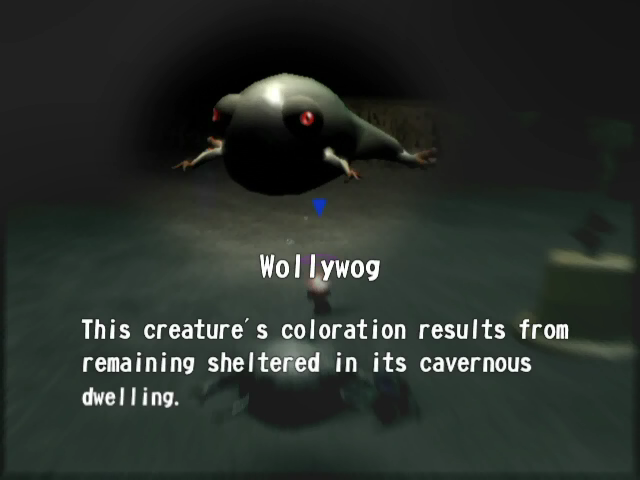

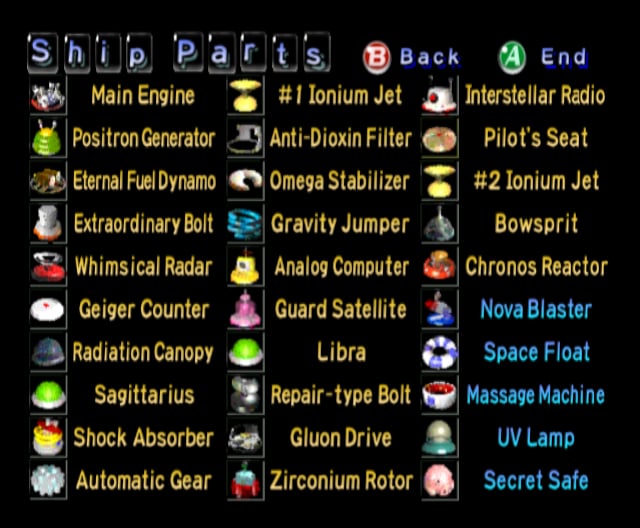



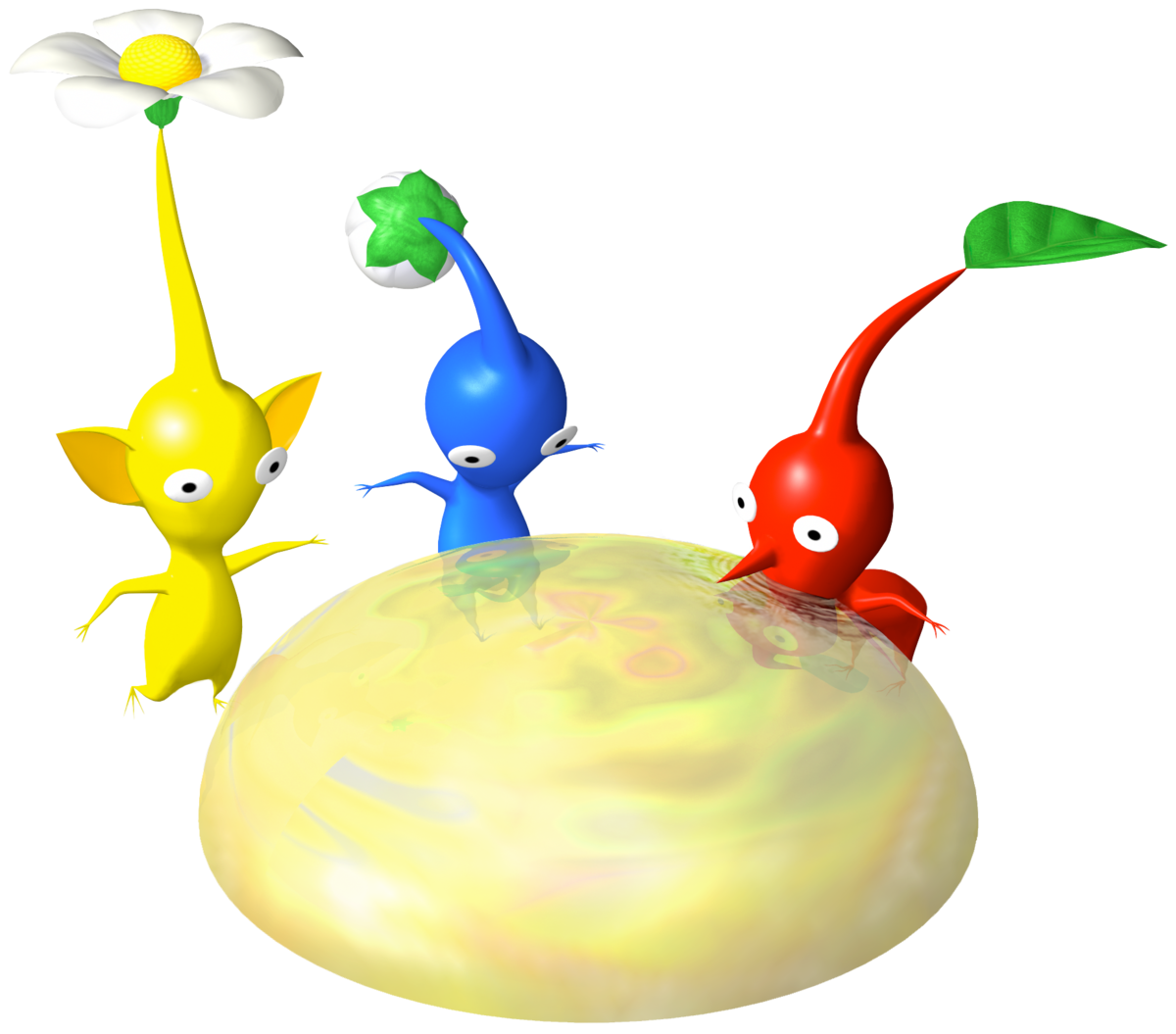

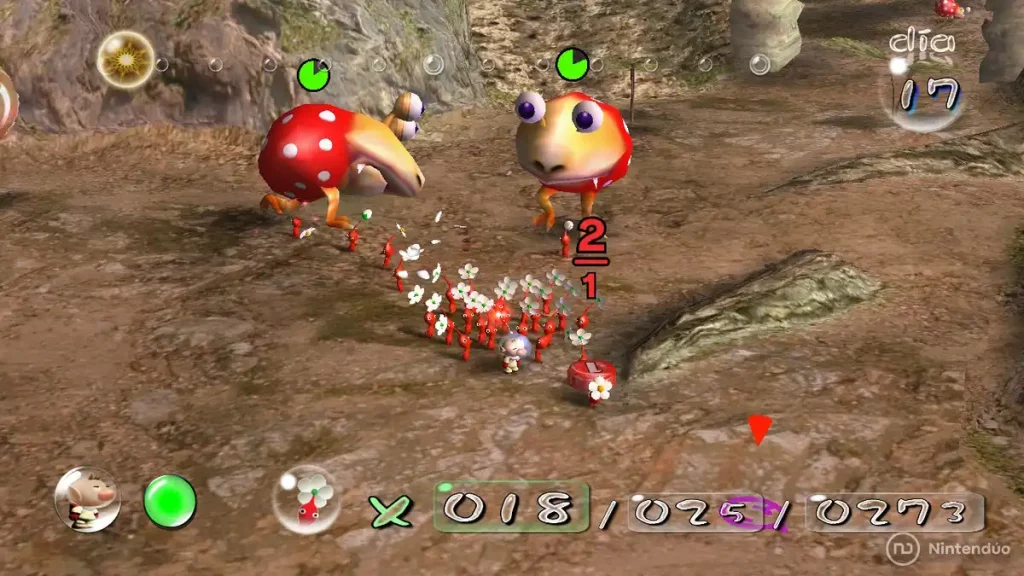
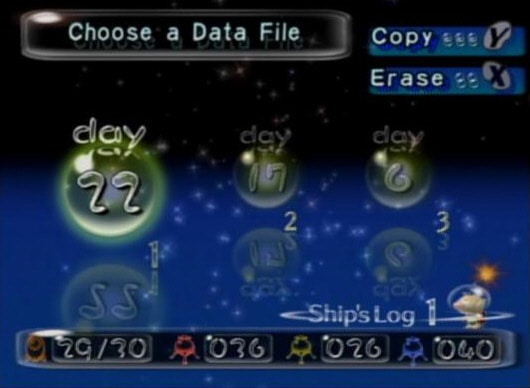


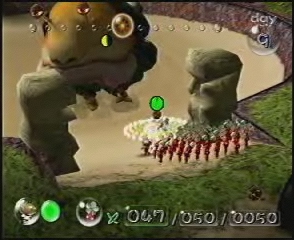

No comments:
Post a Comment